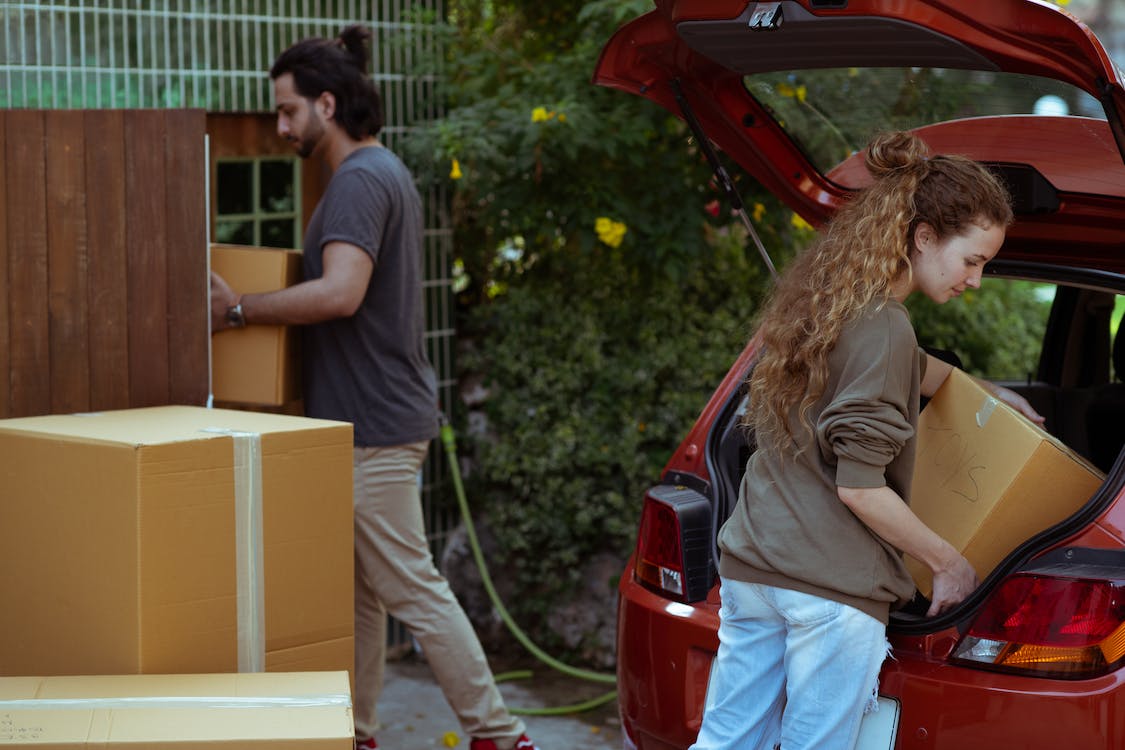How To Move Out Of London Social Housing?
Table of Contents
Moving out of London’s social housing can be a daunting prospect, but with the right preparation it can be a relatively easy process. In this article, we’ll provide tips on how to move out of social housing and into a private rental home or flat in London. We’ll also discuss the different stages involved in moving out of social housing, as well as provide resources and advice on everything from preparing your paperwork to finding the right estate agent.
What Social Housing Is In London?

There are a number of different types of social housing in London, each with its own set of rules and regulations. If you’re looking to move out of London social housing, there’s a lot you need to know. Here’s a guide to some of the major types of social housing in London:
Inner London Boroughs
- The London Borough of Islington has the most amount of social housing in the city, with around 2,000 units. These units are typically owned by local councils and managed by housing associations.
- The London Boroughs of Camden, Brent, Lambeth, Merton and Richmond all have a small number (between 50 and 200) of council-owned properties that are available for rent or for people who are homeless or in crisis.
- The City of Westminster also has a few council-owned properties. The largest is Holland Park, which has 600 units.
Central London Boroughs
- The City of Westminster has the most amount of social housing in Central London, with around 4,000 units spread across 26 different sites.
- The Westminister Council runs five sites that offer a range of affordable and private renting options for people who need them.
- The City of Westminster also has a few council-owned properties. The largest is Holland Park, which has 600 units.
- The Camden Council manages around 1,100 social rented homes in the central London borough of Camden.
South London Boroughs

- The Lambeth Council has the most amount of social housing in South London, with around 2,000 units. These units are typically owned by local councils and managed by housing associations.
- The Richmond Council manages around 550 social rented homes in the south London borough of Richmond.
- The Kingston Council manages about 530 social rented homes across three sites in the south London borough of Kingston.
East London Boroughs
- The Tower Hamlets Council manages around 2,500 social rented homes across 95 different sites in East London.
- The Hackney Council manages about 1,000 social rented homes in Hackney.
The Different Types Of Social Housing

There are a variety of different types of social housing in London, each with its own benefits and drawbacks. This article will explain the different types of social housing in London and provide tips on how to move out of them.
The three main types of social housing in London are council housing, private rented accommodation (PRAs) and housing association properties.
Council Housing: Council housing is provided by the local council and is usually allocated on the basis of need. It is generally much cheaper than private rented accommodation, but it can be less spacious and comfortable. Many people who live in council housing are tenants, but there are also some homeowners who have received a Council Home Grant to buy their home from the council.
Private Rented Accommodation (PRAs): PRAs are privately rented accommodation that is usually provided by companies or individuals. They are usually more expensive than council housing, but they offer more flexibility and choice. Most people who live in PRAs are tenants, although there are some homeowners who have received a Private Rented Sector Tenant Purchase Scheme Grant to buy their home from the private landlord.
Housing Association Properties: Housing associations were originally set up to provide affordable housing for people on low incomes. Today, they provide a wide range of accommodation, including both council and private rented accommodation. Most people who live in housing association properties are tenants, but there are some homeowners who have received a Housing Association Home Purchase Grant to buy their home from the housing association.
Requirements For Moving Out Of London Social Housing

If you are thinking of moving out of London social housing, here are some requirements that you must meet:
- You must have a council approved plan to move out.
- You must be in possession of a valid tenancy agreement.
- You must have paid the rent on time and in full.
- You must have no outstanding rent or housing arrears.
- Your name must not be on any housing waiting lists.
How To Get Out Of Social Housing In London

If you’re looking to move out of social housing in London, there are a few things you need to do. You’ll first need to find a suitable property, and then apply for housing assistance through your local council. Here’s everything you need to know to get started:
-
Get A Plan
Before you can start looking for a new place to live, you’ll first need to create a housing plan. This will help you figure out what type of home is best for you, based on your needs and budget. You can find more information on how to create a housing plan here.
-
Research Options
Once you have your housing plan ready, it’s time to start researching different options. You can use online databases like Rightmove or Zoopla to search for properties near where you currently live. Or, if you have friends or family in the area who can recommend properties, go ahead and ask.
-
Apply For Housing Assistance
Once you’ve found a property that fits your needs and budget, it’s time to apply for housing assistance from your local council. This will help cover the costs of moving into the property (including any deposit required). To apply, simply visit your local authority website and complete the appropriate forms.
-
Get Prepared To Move
Once you have your housing assistance paperwork completed, it’s time to get prepared to move. Make a list of all of your belongings, and pack them carefully into boxes or bags. You’ll also need to provide the council with proof of income and identity, as well as a copy of your housing assistance paperwork.
What Are The Benefits Of Moving Out Of Social Housing?

There are a number of benefits to moving out of social housing, including the ability to afford your own home and increased independence. Here are five reasons why moving out of social housing is a good idea:
- It’s an opportunity to get your own home: One of the main benefits of moving out of social housing is that it’s an opportunity to get your own home. If you’re in receipt of social housing benefits, you may be able to rent or buy a property with those benefits. This can be a great way to improve your finances and independence, and ultimately make your life more comfortable.
- You can save money: Another benefit of moving out of social housing is that you can save money. If you’re living in a property owned by the government, you may be eligible for discounts on mortgage rates and other expenses. By moving into your own home, you can cut down on your costs and enjoy all the benefits that come with ownership – like reduced maintenance bills and no rental fees.
- You gain more control over your life: Moving out of social housing gives you more control over your life. You’ll no longer be reliant on someone else (like a landlord or social housing agency) to provide you with a place to live. This can give you more freedom and independence, which is something you may value highly.
- It can help improve your mental health: One of the benefits of moving out of social housing is that it can improve your mental health. By gaining more control over your life, you may feel happier and more secure. This can be a great way to reduce anxiety and stress levels, and lead a more positive lifestyle.
- It can help reduce overcrowding: Overcrowding is one of the main issues facing social housing today. By moving out of social housing, you could help reduce overcrowding in your community – potentially helping to tackle some of the major problems facing social housing today.
How Much It Costs To Move Out Of London Social Housing

Moving out of London social housing can be expensive and time-consuming. There are a number of factors that will affect the cost, such as where you live and how many items you take with you. To give you an idea of how much it might cost, we’ve outlined the process below.
To move out of social housing in London, you will need to:
- Submit a request to your council
- Pay your moving costs
- Make your own arrangements for furniture, storage, and pets
- Get a job or find other forms of income
- Convince your landlord to give you a termination notice
- Apply for financial assistance from the government or charity
Tips For Moving Out Of London Social Housing
If you’re thinking of moving out of London social housing, here are some tips to help you make the transition:
1.Talk to your landlord or agent -start the process early to get an idea of what’s possible and plan ahead.
2. Get pre-approved for a new home -this will speed up the process and ensure you have everything you need in place before moving out.
3. Make a list of what you need -this will include documents such as proof of income and residency, reference letters, insurance papers, etc.
4. Get organised -have all your paperwork ready before you move out so there are no surprises when you arrive at your new home.
5. Arrange for a move-out check-in -your landlord or agent may require a final inspection before you leave.
Conclusion
If you’re thinking about moving out of social housing but are unsure where to start, there are a few things you should keep in mind. First and foremost, it’s important to understand that it can take time and effort to find the right apartment or house. Second, remember that not all social housing is created equal – some is better than others. Third, don’t be afraid to ask around or contact your local councillor or MP – they might be able to help connect you with resources that could speed up the process.




